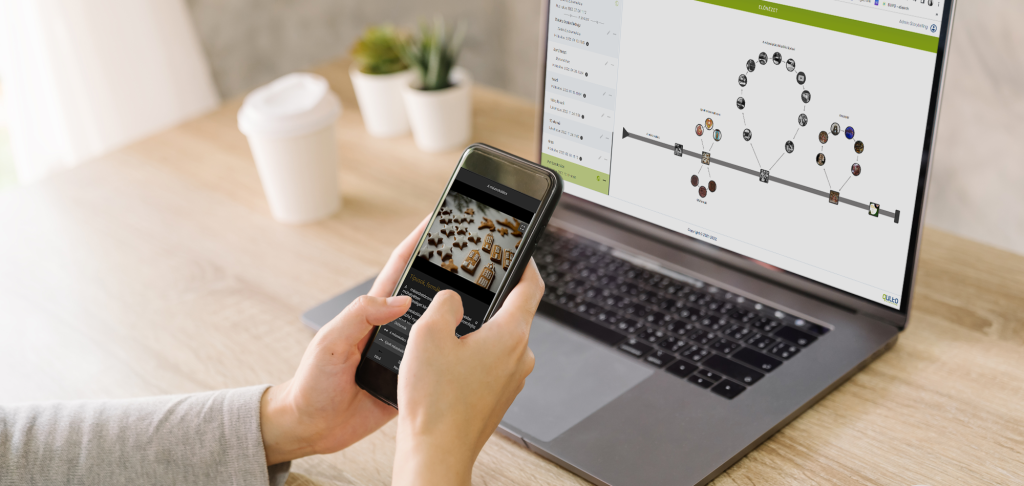The Qulto Museum catalog system grew out of the Qulto Library system, benefiting from the library field’s by then well-established standardisation efforts and our company’s many years of experience in library database data migration.
The primary objective of Qulto Museum is to provide software support for the recording of cultural assets held, managed or owned by museums, and to replace paper-based repositories. At the same time, beyond recording, it supports preservationa and multilingual re-use of further knowledge about these cultural objects .
The very first Qulto Museum system was implemented by the Petőfi Literary Museum in January 2009, and professional cooperation with the institution has continued ever since. With the involvement of other professional partners, the range of supported materials has gradually expanded, and from version 2 onwards, standard museum forms, inventory cards and reports are available. The customisable museum forms – in additon to the fields defined in the NKÖM Regulation 20/2002 – include items to support researchers’ professional work.
The range of available functions is constantly expanding, taking into account the needs and suggestions of both local clients and users from abroad.
Main features:
- records (acquisition, main collections, sub-collections, cabinet cadasters , inventories of duplicates)
- searches, browsing
- built-in media management
- management of subject lists
- generating inventory cards
- generating reports (inventory books, acquisition log, movement log, individual statements)
- multilingual support
- manifold rights management
Museum modules
Cataloging – creating a museum inventory
- Identification of form and content of all types of objects.
- Images and audio files can be attached to the identified documents, therefore museums can build up their own electronic collection and they can serve the increasing needs for online content delivery.
- During description, our software supports the user in checking the regular authority data, as a result, the catalogue will be transparent, organized and will be of high professional quality.
- The number of authority data is unlimited.
- Description happens by forms. Any museum can create its own identification forms, which can be upgraded, modified or changed by the authorized user.
Functions required to audit the museum system in individual collections
- Building acquisition log
- Building inventory books, printing working copy
- Separate inventories – transfer inventory, inventory of lent objects, supporting exhibition organization, closing end-of-year inventories
- Printed outputs – end-of-year inventory book, object card, label, full inventory (current and retrospective), preserving the historicity of inventory data
- Sophisticated access control based on museum standards
- Properties besides the functions necessary for auditing: handling Thesaurus (subject heading system), synonym, parent-child, part-whole relationships, on-demand upload of background thesauri; realization of a structure necessary for archive inventory; feasibility of research log
- Records are connected to: bibliographic (book, article) records; correspondence about artworks; image files; research results
Content management
- In our collection management system it is possible to attach images and other content (3D documents, audio files, videos) to the inventory and authority records. They can be stored and displayed on web interfaces and in printed documents.
Other functions supporting museum work
- Qulto Exhibition module – organizing exhibitions, software support of artwork circulation
- Qulto Conservation module – software support of tracking restoration workflows
- Qulto Relocation module – inventory of storage, transfer and insurance requirements
Modules and services beyond the basic museum system
Support of auditing (only in selected countries)
- Customization of inventory books ready in the system and other outputs according to the needs in the audit process; taking part in the preparation work.
- Monitoring and supporting the audit process until its closure.
Conversion and data migration
- We provide a test period for the time of conversion.
- The previous inventory will be used in paralell as long as necessary.
- After conversion we provide a one-year-guarantee for the whole system (therefore for the conversion, too).
Web publications
- Connection to the EUROPEANA portal
- Own web catalog
- We provide web catalog to our clients. The system makes the data appear in a customized way. Our clients can mark those inventory items and related images that they want to publish. On the basis of the determined criteria we set the required data fields, the search criteria and the way inventortry data and records should appear on the web surface.
- Own portal
Workflow
Would you like to handle your workflows in a controlled way?
Our workflow sub-system can handle the sequence of multiple tasks even if there are paralell steps or different branches.The module registers the completed tasks, and on the basis of their outcomes, it diverts them to different threads of execution, according to the task descriptions in the configuration. It handles phases and steps of complex workflows, and in the case of their failure, it implements compensation tasks. The workflow steps can call external systems (for example to integrate financial transactions) and process the results received, too.
Reports
Would you like to get statistical data and management information from your database?
With our statistical module, which works as an individual subsystem, information supporting management decisions and data about the utilization of inventory or the use of services are also available, alongside the required statistical data.
The scope of information queried in the report module can be freely extended with data stored in the database through configuration modifications.
Quality Management Reports
Drawing up a report of proper quality and appropriate content is not only a legal obligation, but also the basis of increasing efficiency.
These reports are essential for fulfilling quality assurance tasks. The reports obtainable from the system provide up-to-date inventory. We prepare the reports with extensive consideration of the documentation and reporting obligations.
Logistics
Qulto Relocation module – inventory of storage, transfer and insurance requirements with mobile application
Qulto Museum users can manage their artifact transfer events on a web interface. The associated mobile app (Android and iOS) allows users to track the transfer of artifacts even when offline.












































